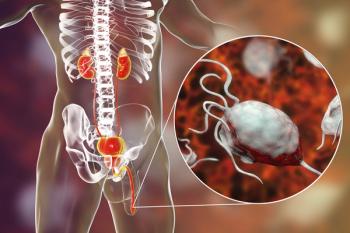Bone health is of increasing clinical importance throughout the clinical course of breast cancer. First, many breast cancer treatments have effects on reproductive hormones that are critical for bone health. This endocrine disturbance results in accelerated bone loss and an increased risk of fractures that can have a significant negative impact on cancer survivors. Second, the bone marrow microenvironment is intimately involved in the metastatic processes required for cancer dissemination, and may be modified by agents that influence bone cell physiology; there is now strong clinical trial evidence that the use of adjuvant bisphosphonates reduces metastasis to bone by one-third and reduces breast cancer mortality by one-sixth in postmenopausal or premenopausal women undergoing ovarian function suppression. Finally, bone metastases are common in advanced breast cancer, and may be associated with serious morbidity, including fractures, pain, nerve compression, and hypercalcemia. Through optimum multidisciplinary management and the use of bone-targeted treatments such as bisphosphonates or denosumab, patients with advanced breast cancer have experienced a major reduction in skeletal complications, less bone pain, and an improved quality of life.
Bone Physiology and the Impact of Cancer
Healthy bone is in a constant state of remodeling, with bone-derived osteoblasts and osteoclasts working together to preserve structural integrity and minimize the risk of fragility fractures. In people of normal health, the relationship between osteoblastic bone formation and osteoclastic bone resorption is finely balanced through the coupled influence of cytokines and other humoral factors. Malignancy disturbs this balance and results in a loss of the normal structural integrity of the skeleton.
Treatment-induced bone loss
The causes of bone loss in cancer patients and the subsequent functional consequences are multifactorial. They include both the side effects of specific anticancer therapies and preexisting clinical risk factors for fracture, such as advanced age, use of glucocorticoids, a history of smoking, low body mass index, a family or personal history of fragility fracture, and low bone mineral density (BMD). The rate of bone loss in patients undergoing treatment for cancer also depends on the menopausal status of the patient, and on average is two to three times more rapid than the natural rate of age-related bone loss.[1]
Premenopausal women are protected from bone loss because their bodies still produce estradiol and inhibins, which act directly on bone to maintain bone mass. However, accelerated bone loss in premenopausal women will occur if ovarian failure is induced by anticancer treatment, or if the protective effects of estrogen on bone are inhibited by estrogen receptor modulators such as tamoxifen. Suppression of ovarian function will cause rapid bone loss that persists for the duration of amenorrhea. However, in patients who receive chemotherapy and remain permanently amenorrheic, the indirect effects of chemotherapy on bone loss will persist. In the Austrian Breast and Colorectal Cancer Study Group (ABCSG)-12 trial of ovarian suppression with endocrine therapy in premenopausal women, rapid bone loss occurred.[2] After 3 years, BMD of the lumbar spine and trochanter were reduced by 11.3% and 7.3%, respectively, with the most rapid loss occurring in patients treated with goserelin and anastrozole. Most patients regained menses after 3 years of endocrine treatment was stopped, and this was associated with partial recovery of BMD at both of the aforementioned skeletal sites 2 years thereafter. We now know that, for premenopausal women at high risk of recurrence, initiation of ovarian suppression therapy along with administration of an aromatase inhibitor is a more effective adjuvant endocrine strategy than treatment with tamoxifen, so the results of ABCSG-12 are of direct clinical relevance to current patient care.
For more than a decade, aromatase inhibitors have been established as the endocrine treatment of choice for postmenopausal women with breast cancer. They reduce endogenous serum estrogen to almost undetectable levels. However, when compared with tamoxifen, aromatase inhibitors are associated with accelerated bone loss leading to a decrease in BMD and a 40% to 50% increase in fracture risk,[3,4] thus presenting an important clinical challenge that must be addressed as part of breast cancer care.
Prevention of Cancer Treatment-Induced Bone Loss
Management of bone loss associated with cancer therapies includes both lifestyle recommendations and pharmacologic intervention. All patients at risk for bone loss should be advised to engage regularly in weight-bearing exercise and reduce smoking and alcohol consumption.[5-7]
Pharmacologic intervention includes vitamin D supplementation (1,000-2,000 IU daily), since many breast cancer patients do not have adequate serum levels of vitamin D, and calcium supplementation (at 1,000 mg daily) if dietary intake is inadequate. Antiresorptive therapies have been proven to be effective in preventing cancer treatment-induced bone loss, although their efficacy is influenced by menopausal status and the rate of bone loss.[5,7]
In premenopausal women, administration of the intravenous bone-targeted bisphosphonate zoledronic acid at a dose of 4 mg every 6 months has been shown to prevent the significant bone loss associated with treatment consisting of goserelin plus tamoxifen or anastrozole.[2] This schedule of zoledronic acid has also been shown to prevent bone loss associated with ovarian failure caused by chemotherapy.[6] Other bisphosphonates have shown some ability to prevent the marked bone loss associated with ovarian suppression and ovarian failure but do not have a sustained effect on BMD in this setting.[8]
In postmenopausal women, the choice of bisphosphonate is broader, with evidence that ibandronate (at 150 mg orally monthly), clodronate (at 1,600 mg orally daily), risedronate (at 35 mg orally weekly), alendronate (at 70 mg orally weekly), and zoledronic acid (at 4 mg IV every 6 months) all prevent the bone loss associated with aromatase inhibitor treatments.[1,7,9,10] Although these trials were not designed to evaluate a fracture-prevention endpoint, results from studies of osteoporosis have consistently demonstrated a good correlation between BMD improvement and fracture prevention.
Denosumab is a monoclonal antibody that selectively targets the receptor activator of nuclear factor úB ligand (RANKL), thereby inhibiting osteoclast formation, function, and survival.[11] In patients with postmenopausal osteoporosis, denosumab at 60 mg administered by subcutaneous injection every 6 months was approved by the US Food and Drug Administration based on the results of FREEDOM, the largest single trial to have assessed denosumab (n = 3,702) vs placebo (n = 3,691) for fracture prevention in primary osteoporosis.[12] In the ABCSG-18 trial, 3,425 women with stage I-III breast cancer were randomized to receive either denosumab, using the dose and schedule recommended for treatment of osteoporosis, or placebo.[13] At study entry, 1,548 participants had a BMD T-score of -1.0. At 3 years after randomization, 9.6% of patients in the placebo arm reported a fracture. Treatment with denosumab significantly delayed the time to first fracture (hazard ratio [HR], 0.50 [95% CI, 0.39-0.65]; P < .0001) and reduced the total number of fractures by about one-half, irrespective of baseline BMD. BMD improved following treatment with denosumab, with a difference in mean BMD at 3 years of 10% between patients treated with denosumab vs placebo.
Treatment guidelines have been produced by expert groups in both Europe and North America.[5-7,14] These guidelines all include the following recommendations:
• An assessment of overall fracture risk using a risk score assessment tool.
• BMD assessment.
• Laboratory assessment to exclude secondary causes of osteoporosis.
• Treatment of patients at high risk of fracture.
In terms of treatment choices, the recent data from the ABCSG-18 trial have not yet been incorporated into most of the guidelines. Clearly the fracture-prevention data on denosumab are impressive and support its use as the treatment of choice. However, as will be discussed in this review, the effects of bone-targeted agents on disease recurrence may trump additional benefits related to prevention of bone loss, and instead argue for use of a bisphosphonate as the preferred therapy.
Metastasis Prevention
The biology of metastasis
The development of metastasis is complex and involves many factors. Initially, multiple systemic factors generated by the primary tumor are thought to be necessary to prepare the premetastatic niche. These factors interact with numerous cell populations in the bone marrow, mobilizing hematopoietic and mesenchymal cells into the circulation. One such systemic factor, lysyl oxidase, or LOX, has recently been shown to increase bone metastasis in murine models and to facilitate the development of premetastatic bone lesions, creating an environment suitable for subsequent tumor cell colonization.[15] Other systemic factors thought to be involved in preparation of the premetastatic niche include the microRNAs; these molecules may contribute to the cancer-induced alterations of the bone microenvironment that underlie subsequent metastatic progression.[16]
Megakaryocytes and platelets have also been shown to modify different steps of the bone metastasis process in model systems. Platelets are prometastatic, supporting survival of circulating tumor cells and their extravasation at secondary sites, and the platelet-derived factor lysophosphatidic acid has been shown to promote the progression of bone metastases. As tumor cells reach bone through the circulation, the vessels in the bone microenvironment are clearly important; in fact, it has been suggested that the perivascular niche is a supportive environment for disseminated tumor cells. Osteoprogenitor cells have been shown to surround some of the capillaries, and there is close coupling between osteogenesis and angiogenesis that may have implications for disseminated tumor cells. Dormant cancer cells have been shown to be located close to stable vasculature, whereas vascular remodeling is associated with proliferating tumor cells.[17 ]
Chemoattractants and attachment factors generated in the hematopoietic stem cell (HSC) niche may also facilitate the homing of cancer cells to these niches, and their survival. The concept that cancer cells reside in the HSC niche and are able to respond to the same signals as those that govern the dormancy/proliferation status of HSC opens up new therapeutic avenues (Figure 1). Cells of the osteoblast lineage may also be key components of the metastatic niche. Their contribution to tumor cell homing, survival, and maintenance of dormancy remains to be established, although several groups have suggested that tumor cells are attracted to the endosteal niche.[17] It is unclear how alterations in bone turnover rates affect disseminated tumor cells, but suppression of bone turnover is part of the rationale for the use of bone-targeted treatments in metastasis prevention.
Once tumor cells have successfully colonized bone, they start to recruit other cell types to support their expansion, including cancer-associated fibroblasts, macrophages, and nerve cells. These complex cellular interactions may be further influenced by reproductive and calcium-regulating hormones, hypoxia, the level of extracellular calcium, and mechanical factors.
Disease-modifying effects of bone-targeted agents
The potential for bone-targeted agents, through profound effects on bone physiology, to modify the process of metastasis, as well as their important effects on disease outcomes, have been the focus of extensive laboratory and clinical research.[16] In addition to the inhibition of growth factor release from bone and interruption of the vicious cycle of bone metastasis, bone-targeted agents have been shown to prevent the homing of tumor cells to bone. They can maintain dormancy of tumor cells in bone, with in vivo studies demonstrating that zoledronic acid prevents proliferation of dormant tumor cells in bone following increased bone turnover secondary to ovariectomy.[18] Zoledronic acid also causes direct induction of tumor cell death in bone when combined with chemotherapy in vivo.[16]
Metastasis-prevention trials with bisphosphonates have reported variable outcomes in terms of disease recurrence, with efficacy apparently influenced in breast cancer by the age and menopausal status of the patient.[16] The ABCSG-12 trial was arguably the most high-profile study to demonstrate the potential benefits of adjuvant therapy with bisphosphonates.[19] This study showed that the addition of zoledronic acid every 6 months for 3 years to ovarian suppression therapy (plus tamoxifen or anastrozole) improved disease outcomes (HR for disease recurrence, 0.64 [95% CI, 0.46-0.91]; P = .01). However, the AZURE trial, performed in a broader patient population, showed no overall benefit (HR for disease recurrence, 0.98; P = .73) from the addition of an intensive schedule of zoledronic acid to standard adjuvant therapy.[20] Nevertheless, in a prespecified subgroup analysis, postmenopausal women receiving zoledronic acid had improved disease-free survival (HR, 0.75 [95% CI, 0.59-0.96]; P = .02) and overall survival (HR, 0.74 [95% CI, 0.55-0.98]; P = .04). These data, alongside the results of ABCSG-12, led to formulation of the hypothesis that the benefits of adjuvant bisphosphonates are restricted to women with low levels of reproductive hormones, brought about through either menopause or ovarian suppression therapy. The hypothesis was strengthened by the results of the National Surgical Adjuvant Breast and Bowel Project B-34 trial, which evaluated the addition of daily oral clodronate to standard adjuvant therapy. Again, outcomes were similar in the total study population, but clodronate did appear to improve disease-free survival in women > 50 years of age (HR, 0.75 [95% CI, 0.57-0.99]; P = .045).[21]
In a recent initiative by the Early Breast Cancer Trialists' Collaborative Group (EBCTCG), patient data were collected from randomized trials globally, to enable a meta-analysis of the effects of adjuvant bisphosphonates on disease outcomes; a specific question was whether menopausal status affected the efficacy of these agents in patients with a range of personal, treatment, and disease characteristics.[22] With 3,453 breast cancer recurrences and 2,106 deaths among 18,766 randomized women, this meta-analysis revealed important clinical benefits that could not be reliably demonstrated in individual trials. Bisphosphonates reduced the time to first distant recurrence in bone (relative risk [RR], 0.83 [95% CI, 0.73-0.94]; 2P = .004) and confirmed a significant interaction between treatment efficacy and menopausal status. There were no demonstrable benefits in premenopausal women, but among 11,767 postmenopausal women, highly significant reductions in cancer recurrence in bone (RR, 0.72 [95% CI, 0.60-0.86]; 2P = .0002) and breast cancer mortality (RR, 0.82 [95% CI, 0.73-0.93]; 2P = .002) were observed (Figure 2).
In this EBCTCG meta-analysis, the benefits in postmenopausal women were similar, irrespective of the estrogen receptor status, grade of primary tumor, axillary nodal status, and type of concurrent adjuvant therapy administered. The type of bisphosphonate used and the dosing schedule employed were not associated with significant differences in the improved outcomes. Additional data in support of a probable class effect came from the recently reported Southwest Oncology Group trial that showed no differences in disease recurrence among patients who received adjuvant treatment with oral clodronate, oral ibandronate, or intravenous zoledronic acid.[23] However, very few data are available on outcomes with the widely used osteoporosis regimens of weekly oral alendronate or risedronate, so the use of these treatments to prevent metastases cannot be recommended. These findings are changing clinical practice, and a European consensus panel of breast cancer experts has recently recommended routine use of adjuvant bisphosphonates in postmenopausal women with early breast cancer.[24]
Denosumab is clearly an effective intervention to prevent fracture, and preliminary data suggest that it may also reduce disease recurrence.[25] However, unlike with bisphosphonates, we do not know if this agent also reduces breast cancer mortality. We will need to wait for the results of the placebo-controlled D-CARE trial (ClinicalTrials.gov identifier: NCT01077154) of adjuvant denosumab for an answer. The survival benefit associated with the use of adjuvant bisphosphonates provides an important extra dimension to treatment of early breast cancer, and this drug class will likely take priority as the bone-targeted therapy of choice, thereby limiting the role of denosumab in routine clinical care.
Treatment of Bone Metastases From Breast Cancer
Although bisphosphonates were first synthesized in the late 19th century, initial usage was restricted to a range of industrial processes, and their potential clinical relevance was not appreciated until the late 1960s. Then, following development for the treatment of osteoporosis and Paget disease of bone, a few academic groups began to investigate the role of bisphosphonates in oncology. Small trials with oral clodronate and oral pamidronate suggested that these agents have useful effects on skeletal morbidity from breast cancer, including reduced bone pain from metastatic disease and the induction of radiographic sclerosis of lytic metastatic lesions.[26] Subsequently, randomized clinical trials were performed to evaluate the effects of intravenous pamidronate on disease progression, and a new endpoint termed skeletal-related events (SREs) was identified, to objectively reflect the skeletal morbidity associated with metastatic bone disease.[27,28] SREs are a defined set of complications from the metastasis of cancer to bone; these include the need for radiotherapy to bone for pain relief or to reduce structural damage, the need for orthopedic intervention for an impending or actual fracture; and the presence of pathologic fracture, spinal cord compression, and hypercalcemia. These studies, and similar trials with oral clodronate,[29] showed significant benefits in breast cancer, with a 25% to 30% reduction in SREs, reduced pain, and improved quality of life.
In recent years, a more convenient and more effective class of bisphosphonates has emerged: the aminobisphosphonates, which include zoledronic acid[30] and the intravenous and oral forms of ibandronate.[31] A randomized, double-blind, multicenter trial compared the treatment efficacy of zoledronic acid with that of pamidronate. The proportion of patients with at least one SRE (the primary efficacy endpoint) was similar in all treatment groups, and the preestablished criterion for noninferiority of zoledronic acid to pamidronate was met. A multiple-event analysis in the breast cancer subgroup showed that zoledronic acid reduced the risk of developing a skeletal complication by an additional 20%.[30] The short infusion time also made therapy with zoledronic acid more convenient than treatment with pamidronate. In a phase III trial, oral ibandronate was compared with intravenous zoledronic acid and deemed to be inferior in reducing the overall risk of skeletal events (rate ratio for SREs, 1.148 [95% CI, 0.967-1.362]); however, it was similar to zoledronic acid in delaying the time to the first SRE.[31]
More recently, denosumab has become a standard of care for prevention of skeletal morbidity in patients with advanced breast cancer. Following dose-finding studies that established denosumab at 120 mg monthly as the optimum dose schedule to maintain complete suppression of bone turnover, studies were performed comparing treatment with denosumab vs zoledronic acid. The first evidence suggesting that denosumab might be superior to bisphosphonates was reported in a randomized phase II study of patients with urinary N-terminal telopeptide (NTx) levels > 50 nmol/mmol creatinine, despite ongoing treatment with an intravenous bisphosphonate.[32] Patients either continued to receive intravenous bisphosphonate therapy every 4 weeks or switched to denosumab. The primary endpoint of the study was normalization of urinary NTx levels, and this was achieved in 49 of 69 (71%) denosumab-treated patients but in only 10 of 35 (29%) patients treated with a bisphosphonate (P < .001). Moreover, considerably fewer denosumab-treated patients experienced an SRE during the 25 weeks of observation.
Subsequently, a double-blind, phase III registration study evaluated denosumab in 2,046 bisphosphonate-naive patients with bone metastases secondary to breast cancer.[33] Patients were randomly assigned to receive denosumab (120 mg) or intravenous zoledronic acid (4 mg), with supplements of calcium and vitamin D. The primary endpoint was the time to first SRE. Denosumab was statistically superior to zoledronic acid in delaying the first SRE (HR, 0.82 [95% CI, 0.71-0.95]; P = .01). Denosumab treatment delayed the occurrence of all types of SREs. However, no differences in overall survival or investigator-reported disease progression were found between the two treatment groups (Figure 3).
Treatment with both bisphosphonates and with denosumab is generally well tolerated. However, there are differences in the adverse events experienced with these two types of therapy: Zoledronic acid is associated with more episodes of acute-phase response and renal dysfunction than denosumab, whereas hypocalcemia occurs more frequently and is more likely to be symptomatic in patients treated with denosumab.[33] It is important that physicians strongly advise patients to take calcium and vitamin D supplements and regularly monitor serum calcium levels, to support bone health.
The most important adverse event associated with prolonged administration of potent inhibitors of bone resorption is osteonecrosis of the jaw (ONJ). In a combined analysis of three blinded, active-controlled phase III trials in cancer patients with metastatic bone disease who were receiving antiresorptive therapies, the incidence of ONJ did not differ significantly between treatment groups. Among 5,372 patients included in this analysis, 89 (1.6%) were determined to have ONJ; 37 of these patients (1.3%) had received zoledronic acid and 52 (1.8%) had been treated with denosumab (P = .13). The risk of ONJ was observed to increase with time and reached 5% when treatment with denosumab was continued beyond 3 years.[34] ONJ management was mostly conservative, and healing occurred in more than one-third of patients.
TO PUT THAT INTO CONTEXT
[[{"type":"media","view_mode":"media_crop","fid":"50924","attributes":{"alt":"","class":"media-image","id":"media_crop_4321649016645","media_crop_h":"0","media_crop_image_style":"-1","media_crop_instance":"6247","media_crop_rotate":"0","media_crop_scale_h":"0","media_crop_scale_w":"0","media_crop_w":"0","media_crop_x":"0","media_crop_y":"0","style":"height: 148px; width: 144px;","title":" ","typeof":"foaf:Image"}}]]
Catherine Van Poznak, MD
University of Michigan, Ann Arbor, MichiganWhat Are the Key Issues Regarding Bone Integrity in Breast Cancer Management?In patients with breast cancer, both the disease itself and the therapies used to treat it can have a negative impact on bone integrity. In the adjuvant setting, systemic therapies that cause premature menopause (such as chemotherapy and chemically or surgically induced ovarian ablation) promote a low estrogen state; reduced estrogen levels, in turn, accelerate the loss of bone mineral density, which may increase the risk of osteoporosis and fracture. Similarly, oral adjuvant hormonal therapies can increase the rate of bone loss and the risk of fracture, although this is influenced by menopausal status and whether tamoxifen or an aromatase inhibitor is used. In advanced disease, bone metastases may disrupt bone integrity, thereby promoting skeletal-related events; they also cause pain and lower patients' quality of life. Preserving bone integrity is critical to the care of patients with breast cancer, regardless of the stage of disease.How Are Osteoclast Inhibitors Being Used to Maintain Bone Integrity? The osteoclast inhibitors, bisphosphonates and denosumab, decrease the risk of osteoporotic fractures and skeletal-related events from metastatic bone disease. They can be used to treat and/or prevent these skeletal complications. Current data suggest that the osteoclast inhibitors used in postmenopausal women receiving adjuvant therapy for breast cancer may also improve disease outcomes. Further studies are needed to identify the patients most likely to benefit from treatment with osteoclast inhibitors in both the adjuvant and metastatic settings. In addition, more data are required to provide guidance on the most appropriate dosing intervals and durations of therapy for the various available agents.
In addition to its superior efficacy compared with zoledronic acid, denosumab is easier to administer because of its subcutaneous route of delivery. As a result, clinical practice guidelines generally recommend denosumab as the preferred agent. However, the guidelines recognize from a health economic perspective (since all bisphosphonates are now available in generic form and are therefore less expensive than denosumab) that healthcare systems may find it difficult from a financial perspective to support denosumab for all clinical situations, and that zoledronic acid remains a reasonable alternative.[26] Before treatment with a bone-targeted agent is initiated, patients should undergo an oral examination and appropriate preventive dentistry, and be advised on maintaining good oral hygiene. Patients should avoid invasive dental procedures (tooth extractions and the placement of dental implants) during treatment with bone-targeted therapy, if possible.
Treatment guidelines recommend that a bone-targeted agent be initiated at diagnosis of bone metastases and continued throughout the course of the disease alongside sequential anticancer treatments.[26] However, consensus is lacking regarding the optimal duration of treatment with bisphosphonates or denosumab. As the survival of patients with advanced breast cancer continues to improve, questions about the appropriate treatment duration and dose schedule for bone-targeted therapies have become increasingly relevant.
Several trials have investigated whether the interval between bisphosphonate infusions can be increased to take advantage of the prolonged pharmacologic effect of these agents on bone, and to improve the convenience of treatment, reduce treatment costs, and potentially minimize the risk of ONJ. Several small trials, including OPTIMIZE-2, ZOOM, and BISMARK, have suggested that reducing the frequency of administration of zoledronic acid does not significantly diminish its efficacy. However, these trials were underpowered to show noninferiority of the less intensive schedules and did not influence treatment recommendations to any significant degree.[35]
More recently, the noninferiority of less frequent zoledronic acid administration was shown in the Cancer and Leukemia Group B (CALGB) 70604 trial.[36] A total of 1,822 patients with bone metastases, including 833 with breast cancer, were randomized from the initiation of treatment to zoledronic acid monthly or every 3 months for 2 years. The noninferiority margin for the primary endpoint of the proportion of patients developing at least one SRE was set at a 7% absolute difference. In a preliminary report, there were no statistically significant differences in efficacy between the two treatment schedules: 29% of patients in both treatment groups experienced ≥ 1 SRE (absolute difference, 0% [95% CI, -3.3% to +5.1%]). There were also no differences in time to first SRE or pain scores.[36] Renal adverse events and occurrences of ONJ were infrequent and too few to allow for meaningful comparison. The final data from this study are awaited with interest, but the available data strongly support the use of the every-3-months schedule, potentially from the outset as tested in the trial and certainly after loading of the skeleton with a few months of treatment with zoledronic acid. Whether the frequency of administration of denosumab can also be reduced is not known and, because the mechanism of action is completely different, with no accumulation of the antibody in the skeleton, the results from the CALGB study should not be extrapolated to the use of denosumab.
Future Prospects
Despite the transformation in the clinical consequences of metastatic bone disease with routine use of bone-targeted agents, there remains a need for new agents that can yield further survival improvements for our patients with advanced breast cancer. There is also a need for a safe anabolic agent to improve bone healing of lytic metastases, to complement the osteolysis prevention achieved through the use of denosumab and bisphosphonates.[37]
The bone-seeking radiopharmaceutical radium-223 dichloride (Ra-223) has recently been introduced into clinical practice. This agent is perhaps the most exciting prospect for treatment and, potentially, prevention of bone metastases.[38] Ra-223 is an α-emitting pharmaceutical (with a half-life of 11 days) that mimics calcium and forms complexes with the bone mineral hydroxyapatite in areas where there is increased bone turnover, such as in bone metastases. Ra-223 produces high, linear energy transfer radiation with ultra-short penetration (< 100 µm; 2 to 10 cell diameters), resulting in a highly localized antitumor effect on adjacent bone metastases while limiting damage to the surrounding normal tissue.
Ra-223 has been shown to increase the survival of patients with advanced castration-resistant prostate cancer, and further reduced skeletal morbidity compared with treatment with a bisphosphonate.[38] In advanced breast cancer, only one open-label, phase IIa, nonrandomized study of Ra-223 has been completed. This trial investigated the effects of Ra-223 as a single agent (with concomitant bisphosphonates) on bone and tumor metabolism in breast cancer patients with bone-dominant disease. Ra-223 significantly reduced the bone biomarkers NTx and bone alkaline phosphatase from baseline levels. In addition, 42% of lesions showed a metabolic response on positron emission tomography imaging.[39] Evaluation of the potential role of Ra-223 in breast cancer treatment is ongoing, with two international, randomized, phase II trials underway of endocrine therapy with or without Ra-223 (ClinicalTrials.gov identifiers: NCT02258464 and NCT02258451). Trials of Ra-223 adminstered in combination with breast cancer chemotherapy are also in development.
Financial Disclosure:Dr. Coleman has received research funding from Amgen and Bayer.
References:
1. Coleman RE, Rathbone E, Brown JE. Management of cancer treatment-induced bone loss. Nat Rev Rheumatol. 2013;9:365-74.
2. Gnant M, Mlineritsch B, Luschin-Ebengreuth G, et al. Adjuvant endocrine therapy plus zoledronic acid in premenopausal women with early-stage breast cancer: 5-year follow-up of the ABCSG-12 bone-mineral density substudy. Lancet Oncol. 2008;9:840-9.
3. Eastell R, Adams J, Clack G, et al. Long-term effects of anastrozole on bone mineral density: 7-year results from the ATAC trial. Ann Oncol. 2011;22:857-62.
4. Coleman RE, Banks LM, Girgis SI, et al. Reversal of skeletal effects of endocrine treatments in the Intergroup Exemestane Study. Breast Cancer Res Treat. 2010;124:153-61.
5. Hadji P, Aapro MS, Body JJ, et al. Management of aromatase inhibitor-associated bone loss in postmenopausal women with breast cancer: practical guidance for prevention and treatment. Ann Oncol. 2011;22:2546-55.
6. Hadji P, Gnant M, Body JJ, et al. Cancer treatment-induced bone loss in premenopausal women: a need for therapeutic intervention? Cancer Treat Rev. 2012;38:798-806.
7. Reid DM, Doughty J, Eastell R, et al. Guidance for the management of breast cancer treatment-induced bone loss: a consensus position statement from a UK Expert Group. Cancer Treat Rev. 2008;34(suppl 1):S3-S18.
8. Hines SL, Mincey BA, Sloan JA, et al. Phase III randomized, placebo-controlled, double-blind trial of risedronate for the prevention of bone loss in premenopausal women undergoing chemotherapy for primary breast cancer. J Clin Oncol. 2009;27:1047-53.
9. Coleman R, de Boer R, Eidtmann H, et al. Zoledronic acid (zoledronate) for postmenopausal women with early breast cancer receiving adjuvant letrozole (ZO-FAST study): final 60-month results. Ann Oncol. 2013;24:398-405.
10. Van Poznak C, Hannon RA, Mackey JR, et al. Prevention of aromatase inhibitor-induced bone loss using risedronate: the SABRE trial. J Clin Oncol. 2010;28:967-97.
11. Lacey DL, Boyle WJ, Simonet WS, et al. Bench to bedside: elucidation of the OPG-RANK-RANKL pathway and the development of denosumab. Nat Rev Drug Discov. 2012;11:401-19.
12. Cummings SR, San Martin J, McClung MR, et al. Denosumab for prevention of fractures in postmenopausal women with osteoporosis. N Engl J Med. 2009;361:756-65.
13. Gnant M, Pfeiler G, Dubsky PC, et al. Adjuvant denosumab in breast cancer (ABCSG-18): a multicentre, randomised, double-blind, placebo-controlled trial. Lancet. 2015;386:433-43.
14. Gralow JR, Biermann JS, Farooki A, et al. NCCN Task Force report: bone health in cancer care. J Natl Compr Canc Netw. 2009;7(suppl 3):S1-S32.
15. Cox TR, Gartland A, Erler JT. Lysyl oxidase, a targetable secreted molecule involved in cancer metastasis. Cancer Res. 2016;76:188-92.
16. Coleman R, Gnant M, Morgan G, Clezardin P. Effects of bone-targeted agents on cancer progression and mortality. J Natl Cancer Inst. 2012;104:1059-67.
17. Ursini-Siegel J, Siegel PM. The influence of the pre-metastatic niche on breast cancer metastasis. Cancer Lett. 2015 Nov 11. [Epub ahead of print]
18. Ottewell PD, Wang N, Brown HK, et al. Zoledronic acid has differential antitumor activity in the pre- and postmenopausal bone microenvironment in vivo. Clin Cancer Res. 2014;20:2922-32.
19. Gnant M, Mlineritsch B, Schippinger W, et al. Endocrine therapy plus zoledronic acid in premenopausal breast cancer. N Engl J Med. 2009;360:679-91.
20. Coleman RE, Marshall H, Cameron D, et al. Breast-cancer adjuvant therapy with zoledronic acid. N Engl J Med. 2011;365:1396-405.
21. Paterson AH, Anderson SJ, Lembersky BC, et al. Oral clodronate for adjuvant treatment of operable breast cancer (National Surgical Adjuvant Breast and Bowel Project protocol B-34): a multicentre, placebo-controlled, randomised trial. Lancet Oncol. 2012;13:734-42.
22. Early Breast Cancer Trialists̢۪ Collaborative Group (EBCTCG); Coleman R, Powles T, Paterson A, et al. Adjuvant bisphosphonate treatment in early breast cancer: meta-analyses of individual patient data from randomised trials. Lancet. 2015;386:1353-61.
23. Gralow J, Barlow WE, Paterson AHG, et al. Phase III trial of bisphosphonates as adjuvant therapy in primary breast cancer: SWOG/Alliance/ECOG-ACRIN/NCIC Clinical Trials Group/NRG Oncology study S0307. J Clin Oncol. 2015;33(suppl):abstr 503.
24. Hadji P, Coleman RE, Wilson C, et al. Adjuvant bisphosphonates in early breast cancer: consensus guidance for clinical practice from a European Panel. Ann Oncol. 2016;27:379-90.
25. Gnant M, Pfeiler G, Dubsky PC, et al. The impact of adjuvant denosumab on disease-free survival: results from 3,425 postmenopausal patients of the ABCSG-18 trial. Cancer Res. 2016;76(suppl 4):abstr S2-02.
26. Coleman R, Body JJ, Aapro M, et al. Bone health in cancer patients: ESMO Clinical Practice Guidelines. Ann Oncol. 2014;25(suppl 3):iii124-iii37.
27. Hortobagyi GN, Theriault RL, Lipton A, et al. Long-term prevention of skeletal complications of metastatic breast cancer with pamidronate: protocol 19 Aredia Breast Cancer Study Group. J Clin Oncol. 1998;16:2038-44.
28. Theriault RL, Lipton A, Hortobagyi GN, et al. Pamidronate reduces skeletal morbidity in women with advanced breast cancer and lytic bone lesions: a randomized, placebo-controlled trial. Protocol 18 Aredia Breast Cancer Study Group. J Clin Oncol. 1999;17:846-54.
29. Paterson AH, Powles TJ, Kanis JA, et al. Double-blind controlled trial of oral clodronate in patients with bone metastases from breast cancer. J Clin Oncol. 1993;11:59-65.
30. Rosen LS, Gordon D, Kaminski M, et al. Long-term efficacy and safety of zoledronic acid compared with pamidronate disodium in treatment of skeletal complications in patients with advanced multiple myeloma or breast cancer: a randomized, double-blind, multicenter, comparative trial. Cancer. 2003;98:1735-44.
31. Barrett-Lee P, Casbard A, Abraham J, et al. Oral ibandronic acid versus intravenous zoledronic acid in treatment of bone metastases from breast cancer: a randomised, open label, non-inferiority phase 3 trial. Lancet Oncol. 2014;15:114-22.
32. Fizazi K, Lipton A, Mariette X, et al. Randomized phase II trial of denosumab in patients with bone metastases from prostate cancer, breast cancer, or other neoplasms after intravenous bisphosphonates. J Clin Oncol. 2009;27:1564-71.
33. Stopeck AT, Lipton A, Body JJ, et al. Denosumab compared with zoledronic acid for the treatment of bone metastases in patients with advanced breast cancer: a randomized, double-blind study. J Clin Oncol. 2010;28:5132-9.
34. Saad F, Brown JE, Van Poznak C, et al. Incidence, risk factors, and outcomes of osteonecrosis of the jaw: integrated analysis from three blinded active-controlled phase III trials in cancer patients with bone metastases. Ann Oncol. 2012;23:1341-7.
35. Ibrahim MF, Mazzarello S, Shorr R, et al. Should de-escalation of bone-targeting agents be standard of care for patients with bone metastases from breast cancer? A systematic review and meta-analysis. Ann Oncol. 2015;26:2205-13.
36. Himelstein AL, Qin R, Novotny PJ, et al. CALGB 90604 (Alliance): a randomized phase III study of standard dosing vs longer interval dosing of zoledronic acid in metastatic cancer. J Clin Oncol. 2015;33(suppl):abstr 9501.
37. Suvannasankha A, Chirgwin JM. Role of bone-anabolic agents in the treatment of breast cancer bone metastases. Breast Cancer Res. 2014;16:484.
38. Coleman RE. Treatment of metastatic bone disease and the emerging role of radium-223. Semin Nucl Med. 2016;46:99-104.
39. Coleman R, Aksnes AK, Naume B, et al. A phase IIa, nonrandomized study of radium-223 dichloride in advanced breast cancer patients with bone-dominant disease. Breast Cancer Res Treat. 2014;145:411-8.
40. Coleman RE, Gregory W, Marshall H, et al. The metastatic microenvironment of breast cancer: clinical implications. Breast. 2013;22(suppl 2):S50-S56.




















































































